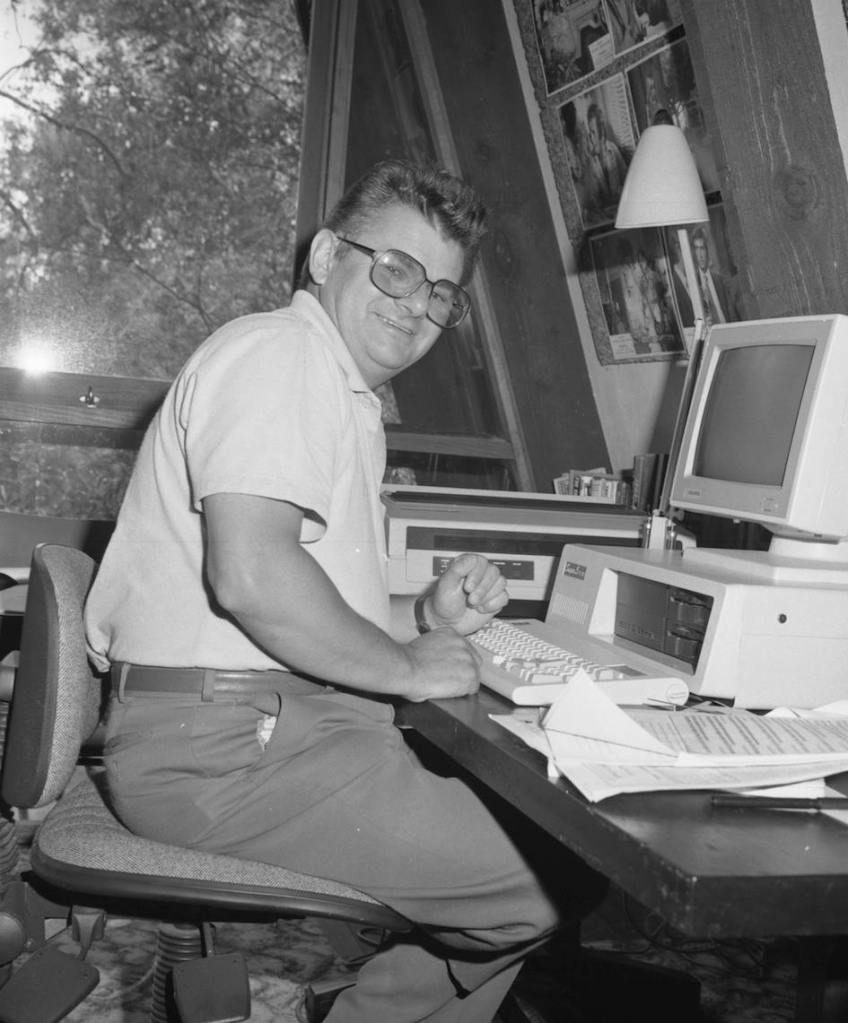
Cliff Green wasn’t Joan Lindsay‘s first choice of screenwriter for Picnic at Hanging Rock but his decision to move to Warrandyte in 1969 and start a community newspaper would have life changing consequences.
Lindsay “badly wanted David Williamson to write the screenplay“, according to executive producer Patricia Lovell, and although Williamson had agreed to do the work he soon left citing an overload of contractual commitments (15).

In 1975 Green recalled Williamson approaching him at the Australian Writers’ Guild Awards presentation (June 1973) to ask if he would be interested in writing the screenplay (20). Williamson said:
“These people in Sydney – this lady in television [Patricia Lovell] – want to make a film of it, and I was to write the screenplay, and now I can’t, and I’ve suggested that you should be approached.”

In 1995 Lovell recalled Williamson recommending Cliff Green because he’d been impressed with Green’s television writing (18).
In a 2007 interview, with film studies specialist Dr. Ina Bertrand (National Film and Sound Archive), Green revealed that Williamson had found a copy of the script at Melbourne’s Pram Factory. “The Pram” was an alternative theatre whose members included Jane Vallis (Marion Quade).
Lovell and director Peter Weir met with Green in Sydney and were quickly satisfied that Green knew exactly what they wanted from the screenplay (18).
But Green’s appointment required Joan Lindsay’s own personal approval. In the same 2007 interview Green revealed that Lovell had contractually agreed that Joan had right of refusal in the appointment of the director and screenwriter.
Lindsay and Green soon met at the Australian Broadcasting Corporation (ABC) where Green was working at the time. But Lindsay’s questioning came to a sudden stop as soon as she discovered that Green lived in Warrandyte.
“… she started to question me and she, she asked me where I lived and I said, Warrandyte. She said, oh well, I think you can do the job.“(14)
Green soon discovered that Joan’s artist cousin Theodore Penleigh Boyd built his home The Robins in Warrandyte and while Joan was a student at the Art School she would sometimes spend her weekends there (Google Maps satellite view below).
Penleigh Boyd’s second child, John á Beckett Boyd, shared Joan’s middle name (à Beckett) inherited from Joan’s great grandfather Thomas à Beckett (19).
As Green began to write the screenplay, and tried to match the Hanging Rock of Lindsay’s novel with the real Hanging Rock that would appear in the film, he encountered what Terence O’Neill describes as “Joan Lindsay’s unusual attitude to time“. “Oh no”, Green recalled Lindsay saying during the interview with Ina Bertrand, “I’ve changed it all … I’ve changed it the way it would be if things were as they should be”. Green remembered Lindsay’s explanation with humour and as “something mad” but many years after Green had adapted the novel, including the character of coachman “Ben Hussey“, Green’s daughter married the grandson of Bill Hussey whose real horse-drawn service linked Warrandyte to neighbouring towns between 1917-1925. While the logical conclusion is that Joan Lindsay had somehow known Bill Hussey, and that he was the inspiration for the character of Ben Hussey, her consistent narrative was that she dreamed the novel into being. The book was publised in 1967 at least 5 years before Lindsay met Green who did not move to Warrandyte until 1969 (21).
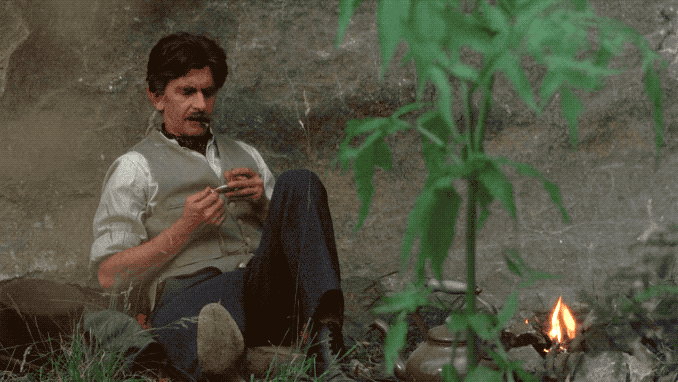
Green’s 2007 interview, about events in 1973, provides one of two narratives describing how Joan first met future husband Ernest Daryl Lindsay;
According to Daryl Lindsay biographer, Dr. Benjamin Thomas, as told by Janelle McCulloch, Joan met Daryl in the back of the National Gallery of Victoria where Joan was still an art student (19). They eventually traveled to London and were married at the Marylebone Registry Office on St. Valentine’s Day, 14 February 1922.
But Green says:
” … they would come out for the weekend to stay with Penleigh and Martin Boyd [Penleigh’s brother] and all those were around, and she actually met Daryl Lindsay in Warrandyte and so this Warrandyte connection was, she always found these connections and everything, and this was what it was ordained to be. And so I was on [board].“
Joan teased a glimpse of what a weekend at The Robins was like:
“And she told me about what they used to they early in the morning they’d come down from Penleigh’s house, just up um, uh, Research Road it is, or Kangaroo Ground Road, Kangaroo Ground Road, come down to the river and, and swim under the bridge naked, with these young artists and models and, and so on. And um, and she said, and sometimes you’d look up and there’d be whole line of horse and jinkers and old cars of the time, all on their way to church and people all looking over the bridge at them swimming around, all these bad arty types, swimming around underneath in the nothings.“
The old Warrandyte Bridge (rebuilt in 1955), only 400m down Kangaroo Ground Road from The Robins, is the subject of one of Penleigh Boyd’s most famous works in the public domain.

2019
In 2019, Cliff Green and wife Judy, sold the Warrandyte home where Cliff created the Picnic at Hanging Rock screenplay.
A promotional article by Jack Boronovskis at realestate.com.au highlighted the “striking angular studio where Mr Green wrote the screenplay for Picnic at Hanging Rock …”
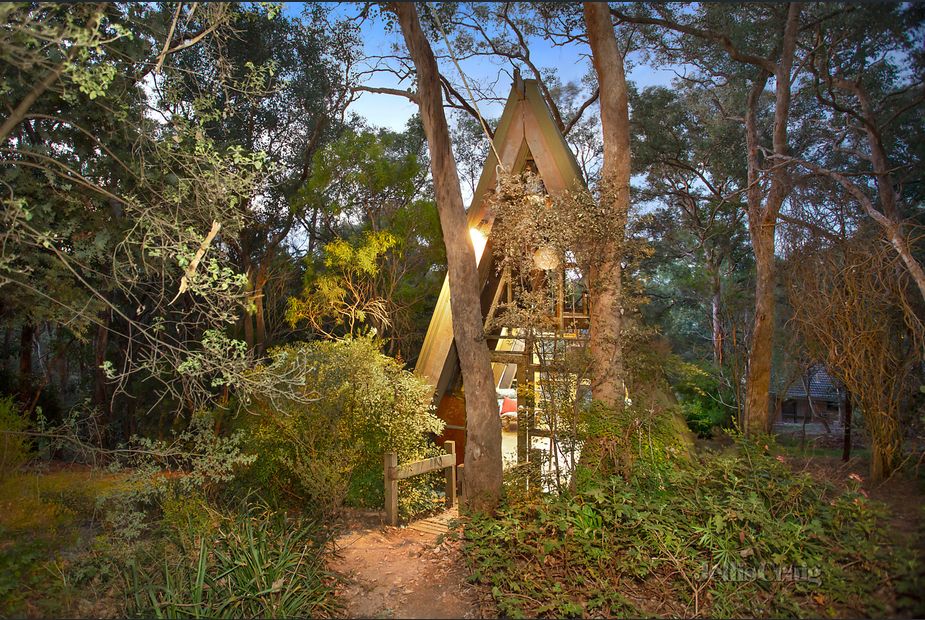
Pictures of Cliff Green from 2009, included in the same article, show him outside and seated within the studio.
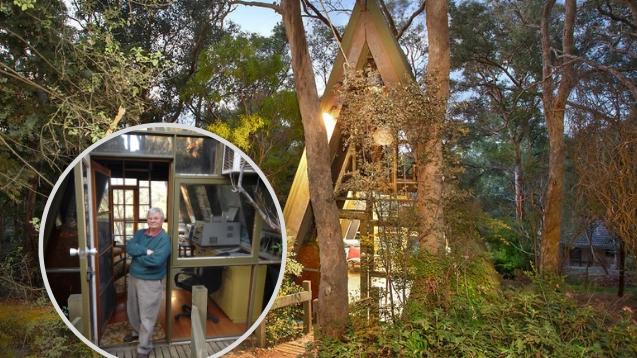
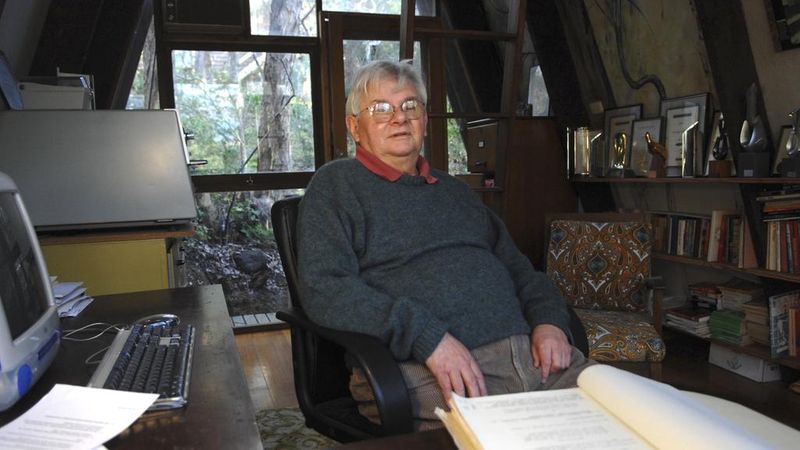
A newer picture, apparently staged for sale in 2019, shows the studio with it’s cathedral-like ceiling sans library, industry awards, and iMac seen in the 2009 images.
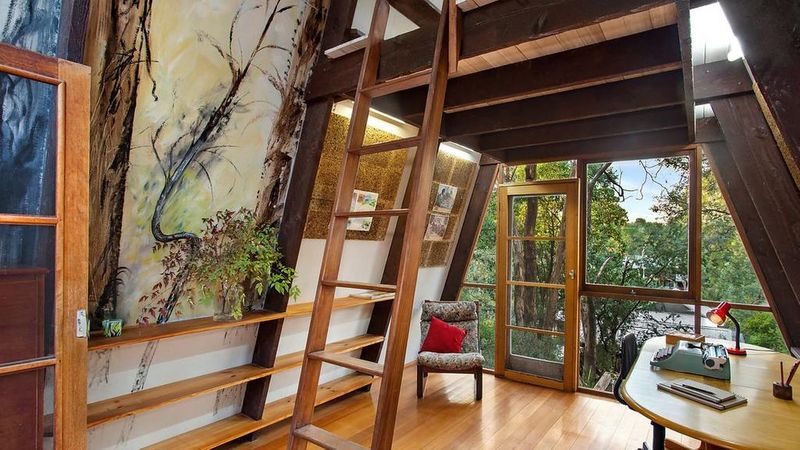
You can read the full article and see inside the rest of the Green’s inspirational home.
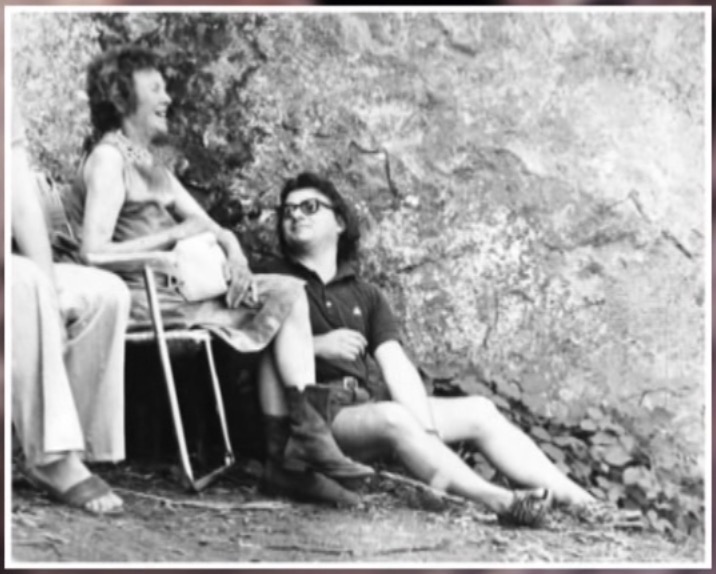
While Green attributed Joan Lindsay’s choice of him as screenwriter to her sense of connection and “the ordination of things” they also seemed to share similar creative habits.
Joan Lindsay, also wrote in the seclusion of a rural studio, at her home Mulberry Hill in Langwarrin South, and held pre-production meetings for the film there.
Lindsay’s home contained her own writing studio and after literally dreaming Picnic at Hanging Rock into being she typed the book after making her longhand drafts.
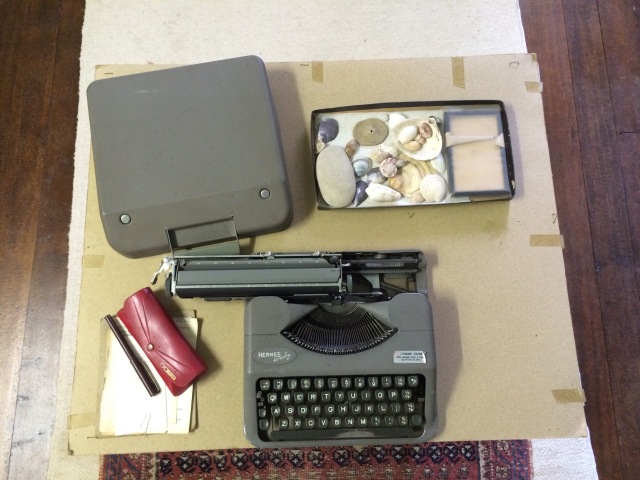
“In the morning I would go straight up to the little room upstairs, sit on the floor, papers all around me like that, and just write like [a] demon, because I knew just exactly what was going to happen from the night before. It was almost as if it was before me, in a kind of, like a film.” Joan Lindsay (13).

Green’s interviews reveal his admiration for both Joan and Daryl Lindsay and he fondly recalls time spent with them.
“And I had a lovely relationship with her and old Daryl was sort of sitting in his studio he was not painting anymore but he was always wanted to have a whiskey with me and it was a very nice very nice period of my career writing time.”
The three creatives (including Daryl) shared a common workflow in that they all had a dedicated creative space in their rural homes. For Joan, it was her Writing Room, and for Daryl his painting studio also at Mulberry Hill; two artists sharing a home but with separate studios. For Cliff Green it was a striking angular studio with cathedral ceiling not far from the river of Joan’s youth.
It was in Cliff Green‘s Warrandyte studio that Joan Lindsay’s story transformed from novel to screenplay and became Australian cultural patrimony.
It is fortunate that the National Trust preserves the provenience of Joan Lindsay’s novel and hopefully Cliff Green’s former studio may one day receive similar recognition.
picnicathangingrocklocations(at)gmail.com
